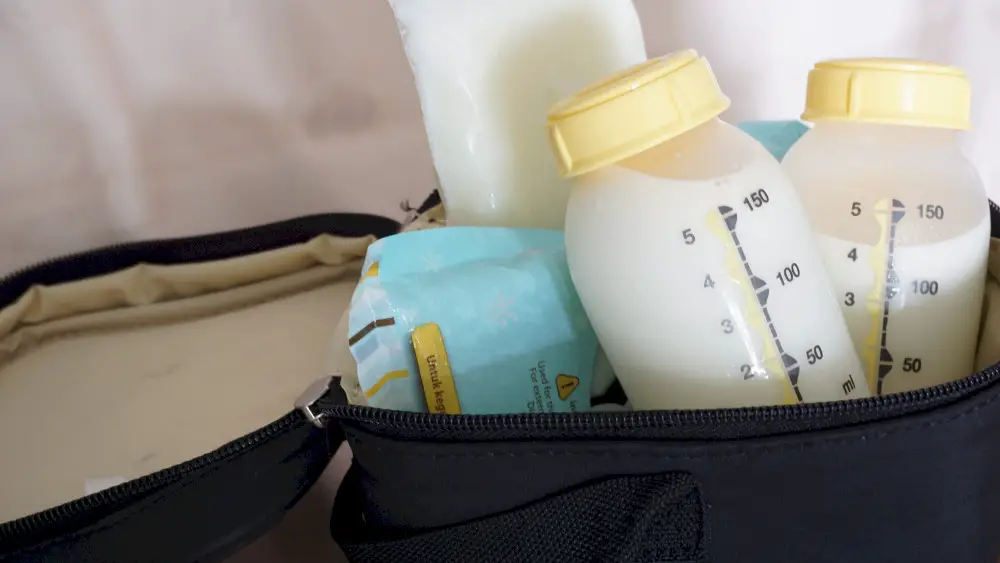How to Travel with Breast Milk: Tips for Traveling While Breastfeeding
The idea of traveling while breastfeeding can be a little overwhelming. Beyond making time to stop and pump, you also have to think about storage; without a plan in place, you may find it more difficult to safely and securely transport your milk to nourish your little one during or after your travels.
Whether you’re traveling by plane, car, or any other mode of transportation, there are specific details you need to keep in mind while transporting milk.
How Long Does My Pumped Milk Last?
As the Centers for Disease Control and Prevention explains, freshly expressed milk can be stored in an insulated cooler baby bag with ice packs for 24 hours. Once you arrive at your destination, make sure to use, refrigerate, or freeze the milk.
Freshly expressed milk at room temperature should be used within four hours of expression. Once you refrigerate expressed milk, you can use it for up to four days. It’s highly recommended to store breast milk in the freezer for six months, or a maximum of 12 months.
If you’re traveling with frozen milk, you can return it back to the freezer at your destination as long as the milk still has ice crystals – this means that the thawing process hasn’t started. If your previously frozen milk begins to thaw, you have 24 hours to use the milk after it has thawed completely.
How to Travel with Frozen Breast Milk and Thawed Breast Milk
If you’re traveling with frozen breast milk by car, make sure to pack your milk in an insulated storage container and keep it concealed. This is the easiest way to keep your milk frozen throughout the duration of your travels. If you’re traveling with expressed milk by car, you have a bit more flexibility—just be sure to properly store the breast milk once you arrive at your destination.
How to Travel with Breast Milk by Car
When traveling with breast milk by car, you have a few options to consider based on the amount of time you’ll be on the road.
If you’re going on a long road trip, bring a large cooler packed with ice to store your breastmilk. This allows you to keep the breast milk colder for longer periods of time, ensuring you can feel comfortable and confident about its integrity when you finally reach your destination.
If you’re taking a shorter car ride, you can pack your breast milk in an insulated tumbler and put it on ice, or bring a smaller sealed and insulated baby bag with ice packs. Shorter car rides also offer the opportunity to travel with room temperature or warm breast milk. In these instances, you can use a thermos or insulated mug with the intention of using the milk within four hours of your travels.
How to Travel with Breast Milk by Plane
Traveling by plane with breast milk is a little more complicated. According to the Transportation Security Administration, you can store and bring large quantities of breast milk (exceeding 3.4 ounces) in checked bags as well as carry-on bags, as long as you follow proper instructions. A small sealed container with ice packs is the easiest way to travel with breast milk in a diaper bag or similar storage accessory.
Because breast milk, formula, and other toddler foods are considered medically necessary during travel, you can also bring breast milk cooling accessories, such as ice packs, freezer packs, and gel packs along for the ride.
Upon arrival at the TSA, you must let the TSA officer know that you’re traveling with breast milk. At this time, they’ll put your breast milk through a standard screening process:
“Although not required, to expedite the screening process, it is recommended that formula and breast milk be transported in clear, translucent bottles and not plastic bags or pouches. Liquids in plastic bags or pouches may not be able to be screened by Bottle Liquid Scanners, and you may be asked to open them (if feasible) for alternate screening such as Explosive Trace Detection and Vapor Analysis for the presence of liquid explosives. Screening will never include placing anything into the medically necessary liquid.”
While the TSA X-ray machines are designed to maintain the integrity of food (and in this case, breast milk), you can opt out of this screening process and instead undergo additional screening procedures. Additional screenings may be performed if your milk is partially frozen or in the early stages of thawing.
Other Breast Milk Traveling Tips to Keep in Mind

If you’re feeling intimidated about traveling with breast milk, consider these other tips and tricks to alleviate the stress involved and maintain the integrity of your breast milk:
- Always date and label your stored breast milk. Labeling your breast milk will give you peace of mind during feeding and thawing time.
- Store breast milk by the amount you plan to feed. To avoid wasting breastmilk you didn’t use, only store it by the amount your baby tends to feed. We recommend storing milk between 4 and 6 ounces at a time.
- Use, store, or freeze your milk as soon as you get to your destination. The sooner you put the milk where it belongs, the less you have to worry about the milk going bad.
- Breastfeed on the go. If you have the option to breastfeed during your travels, take advantage! This is the easiest way to nourish your child without worrying about the hassle that comes with traveling with expressed milk.
Embrace the Breastfeeding Journey
Breastfeeding is one of the many honors of raising your child. Celebrate the journey with a piece of breastmilk jewelry. Whether you’re at home or on the go as a busy mom, try your best to embrace all aspects of the breastfeeding journey as you go. If you still have questions about freezing/thawing breastmilk when it comes to shipping breastmilk for your jewelry, be sure to check out our FAQs. Here we detail everything you need to know about shipping breastmilk out safely and securely. Breastfeeding is one of the many honors of raising your child. If you have any questions, feel free to reach out to our team. Explore one-of-a-kind breast milk jewelry at KeepsakeMom.












